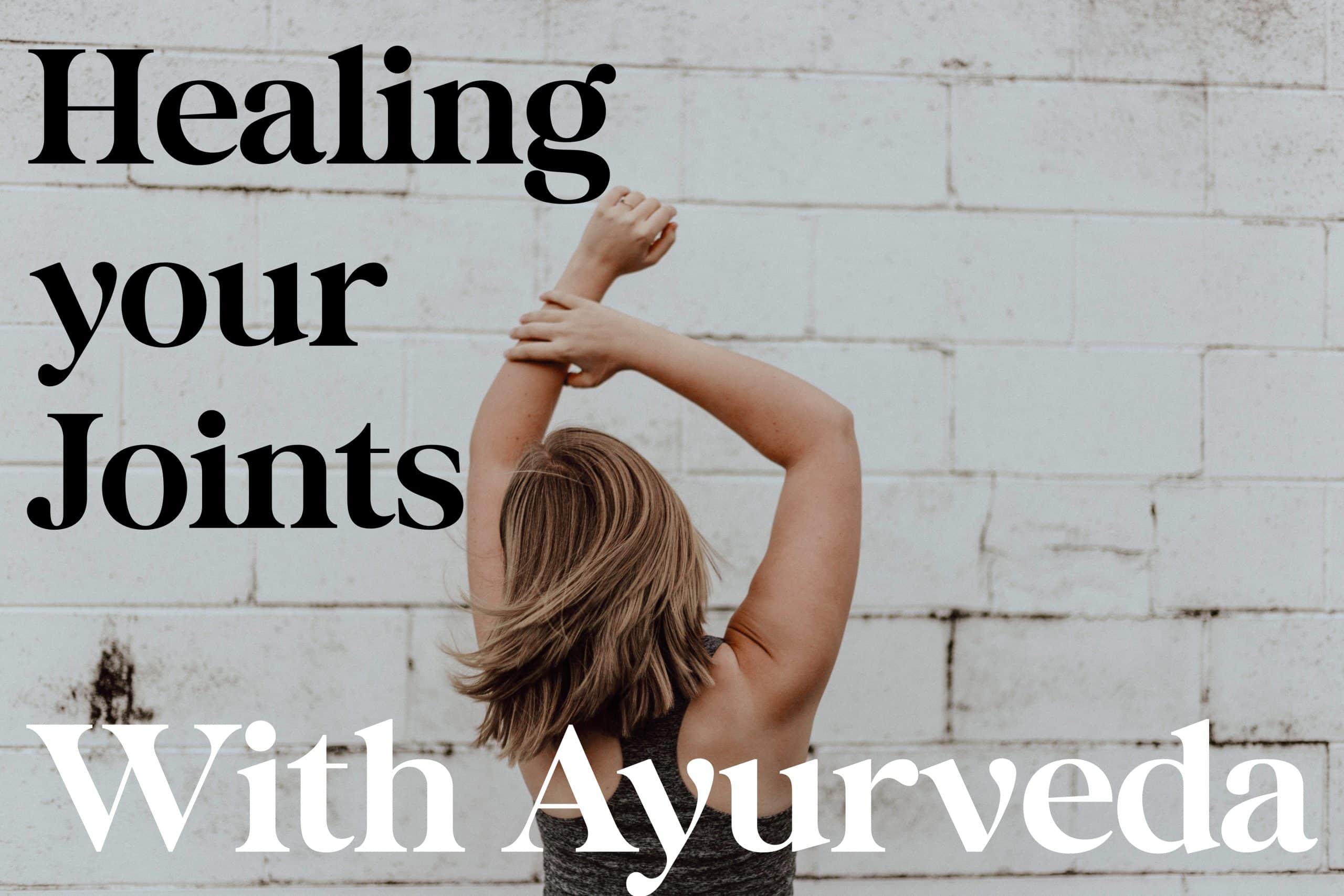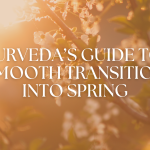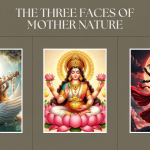Ayurvedic Panchakarma compared to Modern Medicine
Joint pain is one of the most common causes of chronic pain and inflammation for the aging body. Conditions like rheumatoid arthritis can have a lot of variables that cause it and aggravate it. Similarly, there is a lot of variability in how joint pain manifests and how people experience it.
Modern approach to joint pain is over-simplified. If you have day-to-day pain take Ibuprofen or Tylenol; if you have chronic pain, then take an opioid or cannabis; if you have an autoimmune condition take a steroid or biological immunosuppressants. Either way, there is no cure available, only pain relief is possible. This pain relief comes at the cost of ever-increasing dependence on pharmaceutical drugs.
Ayurvedic approach offers a suitable and comprehensive alternative to these. As a nature-based functional medicine, the Ayurvedic physician is concerned about the mechanisms that have caused the injury and sustain the inflammation in the joints. By understanding the mechanism of the injury, we can understand the functional disturbance in the physiology of the person. Then, we can apply our treatments, diet, self-care practices to correcting the disturbance, in turn, the body controls the inflammation.
Control of inflammation is one of the first steps to recovery. This is the “damage control” aspect of the treatment. After this, begins the cleansing process to clear out the inflammatory and toxic byproducts from the joints and blood. Finally, we arrive at joint restoration and regeneration phase of the treatment. Ayurvedic Panchakarma is a journey through these three phases of healing from Arthritis.
Why Joints are targeted by inflammation?
Joints become targeted because joints are spacious. Our joints can accumulate toxins and prevent those toxins from accumulating in the brain, kidney, heart, etc. In the absence of proper elimination, it is the safer choice for the body to accumulate toxins in the joints.
Rheumatoid Arthritis can arise from one of two main mechanisms in the body.
First is due to accumulations of toxin from food and unhealthy digestive system, that clog the joints. This leads to inflammation against these toxins, that results in joint inflammation. This category of Arthritis is called the Ama-vata category of Arthritis.
In the second category, there is biochemical dysfunction that affects the metabolic activity of the liver and spleen. This leads to accumulation of oxidative and cellular debris in the blood. This causes blood tissue to become unstable and inflammatory. This inflammation can spread into the joints, causing the Rakta-vata category of arthritis.
The Panchakarma treatment:
Preparatory phase for Panchakarma:
Stage 1: Deepana-Pachana phase1 — In the preparation phase, the focus is to metabolize and minimize the toxic load of the body. This involves the process of Deepana-Panchana. This means activating the metabolism and digesting toxin, respectively. For the Deepana, we give bitter and pungent herbs to the patient. These herbs help to stimulate liver, spleen, as well as detoxing enzymes on the tissue levels. While a whole body cleanse can be experienced during this phase, herbs are specifically chosen to use the means of blood cleansing and lymph drainage to promote joint cleaning. Deepana-Pachana can take 3-6 weeks before we are ready for the next stage. This relatively slow action is because it our first counterattack against chronic and overwhelming state of dis-ease.
Sometimes, body therapy is also recommended during this phase of cleansing. Specifically, oil massages called Abhyanga helps with lymphatic drainage and pain relief. Dhanyamla dhara, which is drip of fermented broth of rice, lentils, millets, lime, carom seeds, etc. is done to help the joints and lymphatic tissues open up to the channels of detoxification, the spleen and liver.4
Stage 2: Snehapana phase – our joints are protected by a joint capsule and blood-barrier. In can prevent thorough cleansing of the joints. So, our next step is Snehapana. In this step, herb-infused ghee or oils are used by-pass the blood barriers. This works because oil can easily diffuse across fatty-membrane make-up the blood barriers. By its nature, oily substances lubricate and nourish the joint and further aid the elimination of toxins out the lymphatic system. Patients may be asked to take small amounts of herbal ghee or oil with their phase 1, Deepana-pachana medicines. In preparation for Panchakarma, patients take saturating quantities of oils. This means, increasing oil or ghee intake from 1 tablespoon up to 12 tablespoons over the course of 7 days.
Saturation helps to maximize the cleansing and elimination effect from the joints. This step leads us to the final stage of preparation.
Stage 3: Virechana phase7, 8 – Virechana is the purgative elimination that follows the saturation of ghee or oil in the body. This purgation is the first of the actions of elimination stimulated in a panchakarma. Fatty toxins accumulate in the lymphatic system, then go to the liver and are converted into bile and other fatty forms of elimination. Virechana is the purgative elimination of all the toxin has come out from the first two stages of preparation.
Gandharvahastadi oil, a herb-infused castor oil, is described by Sage Charaka as the best substance for oily elimination in such conditions.2
Panchakarma Treatments:
Virechana, which is the last stage of preparation, is the first of the Panchakarma treatments for cleansing the body. With this, we have opened the following channels: blood, lymph, liver, spleen, and colon for elimination of toxins. In Panchakarma, we build on this foundation to create a deep and lasting change in the physiology.
In case of Arthritis, there are three important actions the body must learn. 1) cleansing/elimination of toxins, 2) Healing the joint capsules and closing the joints from invasive toxins, 3) healing the joint itself, to regain lubrication, mobility, and strength.
Goal 1: Cleansing/elimination of toxins. There are two main avenues of elimination the body can use to clean joints:
- Lymphatic drainage: lymphatic drainage in Panchakarma is promoted by doing two procedures: 1) Abhyanga oil massage with herbal steam and 2) hot bolus massage therapy. The abhyanga massage is soothing and very relaxing to the body. As the body relaxes, the moderate pressure massage by the therapist helps the movement of the lymph. This massage helps to promote lymphatic drainage from the joint into the lymph vessels. Following massage, herbal steam promotes sweat and drainage.
- The hot bolus massage combines the benefit of massage and sweat. It causes local heating of the skin and underlying musculoskeletal system. This causes local sweat. Sweating promotes local elimination of toxins from the lymph to the skin and out of the body. These bolus therapies can be done with hot sand1 or dry herbal powders when patient suffers from heavy lymphatic congestion and swelling of joints; while fresh herbal leafy boluses3 are used when joints tend to have more heat and active inflammation.
- Liver/Colon: Elimination through the liver and colon is undertaken with the help of decoction enemas. These enemas are specially prepared with herbs based on the person’s constitution and type of inflammatory process. This means, we consider the specific mechanisms and type of toxic burden a person has, in order to choose the appropriate ingredients to target our cleansing.
- Decoctions are made from herbs like Dasamula, Nirgundi (Vitex n.)3, Castor root, Musta, Cedar, Triphala, Aragwadh, Rasna, dhanyamla5, tamarind6 etc. These decoctions are combined with herbal oil, honey, Himalayan salt to promote elimination of oily toxins, pathogenic flora, and water-soluble toxins from the colon. These eliminations can be intense, so we take care by applying soothing oil enemas in between. Oil enemas calm the gut, the nervous system, and promote healthy gut flora.
Goal 2: Healing the joint capsules helps to keep toxins out and prevent future joint inflammation.
- Snehana: which is external and internal oil application in Panchakarma help the nourishment and healing in two very important way.
- Fatty membrane nourishment: Oils are fatty by nature. They nourish the fatty membranes that make up the joint capsules and blood barriers that protect our joints. In the course of 5-10 days of Panchakarma treatments patient receives massage with up to 2000mL or 64oz of oil. This helps to nourish the whole musculoskeletal system.
- Healing the connective tissues and gut: Oil enemas are done during the panchakarma to sooth and nourish the gut wall, promote healthy flora, and soothe the gut nervous system. You might be wondering what this has to do with joints…
- Besides our skin, gut is our soft-tissue barrier against things coming from outside. It is a highly specialized filtering environment that combines physical barriers (connective tissues and membranes), physiological barriers (digestive and detoxing enzymes), immune system, gut flora, and the nervous system to filter toxins. A healthy gut reduces the burden on your joint capsules and other internal barriers by keeping toxins out of the body. Patients may get up to 64oz of oil in the form of oil enemas during a 10 day panchakarma.
Goal 3: Regaining lubrication, mobility, and strength of joints is the ultimate goal of this healing process. This is bringing life back to your joints and returning vitality to your life. While this process starts during the cleanse with the help of a nourishing and simple diet, life after panchakarma is the main stage for our joints to become whole and healthy.
Our work is not done after 5-10 days of panchakarma. The joint healing is just beginning. This might be perplexing for some. But a simple analogy restoring a rundown house can be considered. When we have a rundown home with dirt, debris, damage, and waste accumulating, we cannot do restoration before cleansing. When we have to thoroughly cleansed the house, we get a sense of underlying health the begin the restoration.
- Diet: Ideal self-care begins with a healthy diet. Once you have cleansed the body, it is especially important to consider what you let it. You are most vulnerable to for 2 weeks after this panchakarma. This is because your body is clean and getting adjusted to a new physiology at this point. This can be easily disturbed by going to unhealthy behaviors.
- Vegetables are your best friends. They keep inflammation down and antioxidants up. They are rich in fiber, minerals and multivitamins. Taking 50% of your nutrition in the form of vegetables is the best option.
- Easy to digest foods… cooked foods like soups, stews, sautés are easiest for the body to digest. Comparatively, foods that are fried, breaded, full of preservatives, and other chemical additives challenge our barriers and weakens our toxin elimination.
- Lifestyle: What we do in a day is very much what our body learns to accommodate as our functional capacity. For example, athletes have larger and more robust muscles and intellectuals develop more robust neural pathways for their specialty. So, when we live a mobile and active lifestyle post-panchakarma, our body heals to accommodate that. What activity you do must be built up gradually under the advice of your doctor and physical therapist. The Ayurvedic way is the always make the moderate effort, not too little and never excessive. As your functional capacity increases even moderate effort will appear lot more than what you were able to do before the panchakarma.
- Continuing care: Ayurvedic care should be an ongoing part of your life. Depending on the severity of and chronicity of your disease, this might mean you continue taking some treatments like massage and herbal sweat once or twice per month to help your body keep healing. But, in cases where severity has been greatly reduced by the panchakarma, you can simply take internal herbal supplements and perform seasonal home-cleanses to maintain your health.
Conclusion:
In conclusion, panchakarma is the most comprehensive process of cleansing and restoration offered in Ayurveda. It is a functional and systematic process to eliminate toxins, restore healthy barriers and functions, and ultimately heal your joints. Your journey must be carefully considered and individualized to get best results. You must have courage and willingness to take responsibility for your healing. Finally, you must have a trustworthy Ayurvedic team to support your effort.
References:
- Swathi C, et al “Role of Panchakarma in the management of rheumatoid arthritis.” Journal of Pharmacognosy and Phytochemistry 2019; 8(3): 3960-3965.
- Acharya YT, editor, (2nd ed.). Commentary Ayurveda deepika of Chakrapanidatta on Charaka samhita of Agnivesha, Siddhistana; Panchakarmiya siddhi: Chapter 2, Verse 16. Varanasi: Chaukhambha orientalia, 2011, 681p.
- Thanki K, et al. Effect of Kshara Basti and Nirgundi Ghana Vati on Amavata (Rheumatoid Arthritis). Ayu. 2012 Jan-Mar; 33(1): 50–53.
- Das CR. “Effect of Danyamladhara in the management of Amavata (Rheumatoid arthritis): A case study.” Journal of Medicinal Plants Studies 2021; 9(6): 07-09.
- Ranasinghe R L D S & Ediriweera E R H S S: Effects Of Dhanyamla Vasti On Amavata With Special Reference To Rheu- matoid Arthritis- A Case Report. IAMJ: Volume 3; Issue 6; June- 2015.
- Kaushik J, et al. “Role of Vaitarana Basti in the Management of Amavata w.s.r. to Rheumatoid Arthritis – A Case Study” International Research Journal of Ayurveda & Yoga, Vol. 4 (12),67-73, December, 2021.
- Gupta SK, et al. “Management of Amavata (rheumatoid arthritis) with diet and Virechanakarma.” Ayu. 2015 Oct-Dec; 36(4): 413–415.
- Mane PR, et al. “A holistic approach of Virechan Karma in Rheumatoid Arthritis.” World Journal of Pharmaceutical Research, Vol. 9 (15), 2020.




